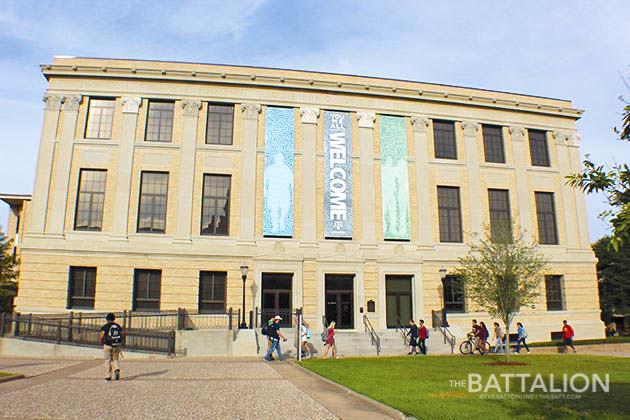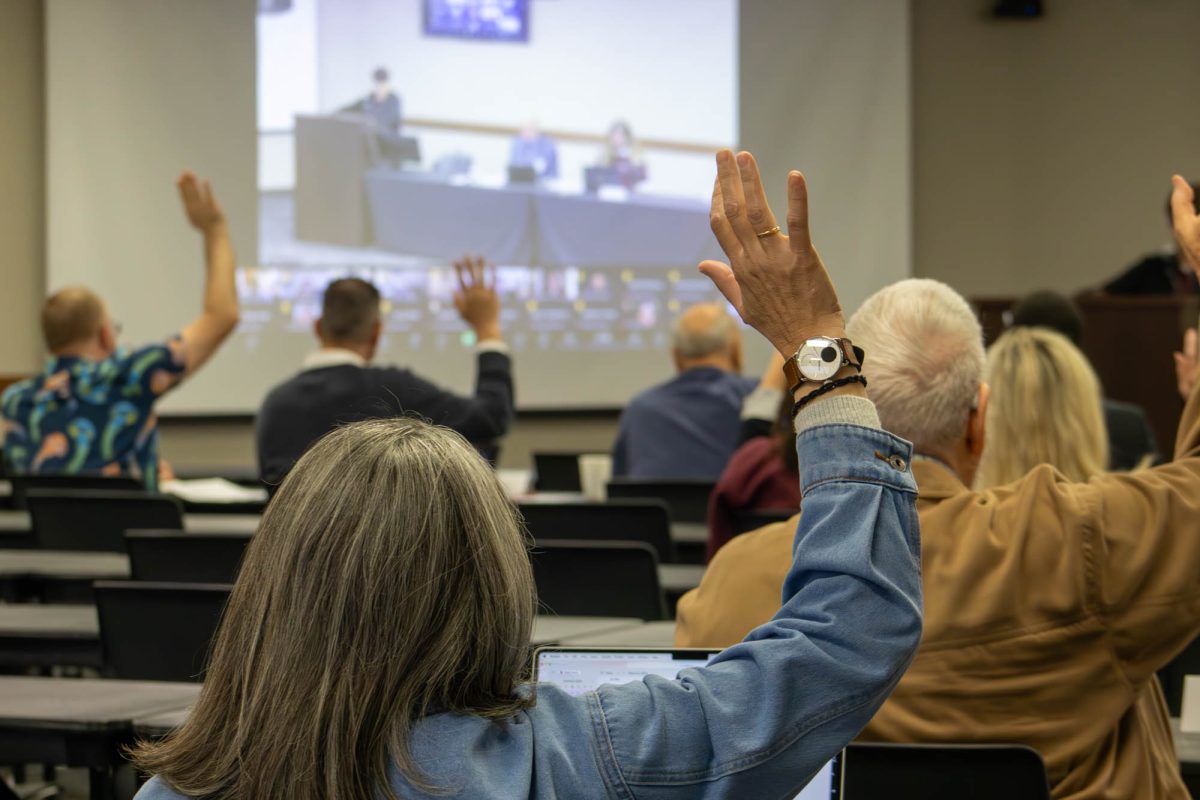As historical and modern photos of blackface make headlines — sparked by the discovery of a racist photo of Virginia Gov. Ralph Northam in his college yearbook — racism in college yearbooks has become a significant topic of discussion.
A university-wide email was sent on Feb. 14 by Texas A&M President Michael Young with the subject line “Acknowledging Parts of Our Past.” The message addressed the fact that A&M’s yearbook has, throughout its history, published photos of “blackface, misogyny, and other shocking content,” which Young said the university disavows. His email followed reporting by multiple news outlets covering a series of tweets by Rice University student Charlie Paul on his own school’s history of blackface and racist cartoons. Paul’s tweets also included a 1922 photo labelled “The Ku Klux Klan of Rice Institute,” showing around 20 people in white hoods and robes.
A&M’s yearbooks — accessible online after a two-year digitization process completed in 2015 by Cushing Memorial Library archivists — show similar content.
During the digitization project, a brief task force comprised of Bruce Herbert, Stephanie Elmquist, Carmelita Pickett, Rebecca Hankins and Julie Mosbo made the collective decision to publish the full yearbooks and made suggestions for staff to respond to any questions or concerns about the books’ contents.
“The conversation started because there was an observation of what we were scanning in some of the images and they were concerning,” said Mosbo, the clinical associate professor and interim director of Cushing Library.
“We wanted to figure out a way of addressing it; we knew that we should address it in some manner.”
Additional steps taken included the disclosure on the page of the digitized yearbook website page, which states: “Through our website, the Libraries offer public access to a wide range of information, including historical materials that may contain offensive language or negative stereotypes. Such materials must be viewed in the context of the relevant time period. Texas A&M does not endorse the views expressed in such materials.”
University archivist Greg Bailey said the role of archivists is to preserve history, regardless of its content. Although Bailey was not on staff when the choice was made to digitize the full content of the yearbooks, he said he agrees with their final decision.
“The idea is to collect and preserve the university’s history — all aspects of it — and then make it available to researchers,” Bailey said. “Here at Cushing, we don’t try to close off our collections. We try to make them available to anyone. The idea is to do research on them, to learn from the past, expand your horizons, things like that, and see the good and the bad that could have gone on in the university’s history and try and strive to move forward with that.”
In his university-wide email, Young also said that when discrimination is seen, people have a duty to “call it out, to refute it and to stand for respect and love for all.”
Mosbo said part of the library’s motivation for its decision was to allow Aggies to learn from their history.
“I think we just all feel it’s important to learn from the past,” Mosbo said. “It helps us better ourselves for the present and for the future. … We looked at the Library of Congress, and they also don’t try to shield their users from similar images, so we made note of that.”
Jarrett Eubanks, environmental sciences senior and president of the A&M Collegiate Chapter of the NAACP, said that although Young’s email was well done, there is still work to be completed on campus to make it fully inclusive and welcoming to all students.
“You have groups of people that are in this university now that were victims of this type of history, these types of actions, and that type of mindset,” Eubanks said. “That history is important because this school hasn’t always been what it is today. It’s a great institution, but it still has work that needs to be done also.”
Vice president and associate provost for diversity Robin Means Coleman said in an interview in November of 2018 that there is still work to be done at A&M to make it a better place for diversity.
“So when we talk about when people say ‘I don’t know why people complain…,’ it’s not about complaints, it’s about making A&M better,” Means Coleman said. “And to think that we can change a sense of belonging in one short generation I think is foolish, and I think that that’s where the work begins. [A&M’s integration] didn’t change everything and suddenly everybody’s hearts and minds switched. No, that takes intentional work, and we’re doing that intentional work here.”
Undoctored history
February 28, 2019
Photo by FILE
The Cushing Memorial Library and Archives created a digitized yearbook collection including every edition up to 2010.
0
Donate to The Battalion
$2790
$5000
Contributed
Our Goal
Your donation will support the student journalists of Texas A&M University - College Station. Your contribution will allow us to purchase equipment and cover our annual website hosting costs, in addition to paying freelance staffers for their work, travel costs for coverage and more!
More to Discover










